History of the School
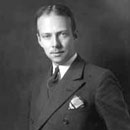
John Ely Burchard
Dean, 1948-1964
The School's Deans

John Ely Burchard
Dean, 1948-1964
|
Edwin Sharp Burdell |
1937-1938 |
|
Robert Granville Caldwell |
1938-1948 |
|
John Ely Burchard |
1948-1964 |
|
Robert Lyle Bishop |
1964-1973 |
|
Harold John Hanham |
1973-1984 |
|
Ann Fetter Friedlaender |
1984-1990 |
|
Philip Shukry Khoury |
1990-2006 |
|
Deborah Kay Fitzgerald |
2006-2015 |
|
Melissa Nobles |
2015–2021 |
|
Agustín Rayo |
2021–present |
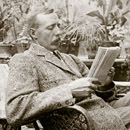
Reports

The Lewis Report, which led to the founding of the School
The Joskow Report, which led to a strengthenning of the creative arts at MIT
Growth Over The Decades
1861
Roots of MIT SHASS trace to the Institute's founding
with courses in English, modern languages, psychology, and political science
The roots of MIT's School of Humanities, Arts, and Social Sciences (MIT-SHASS) date to the earliest days of the Institute, which was founded in 1861 and opened in 1865. In the Institute's first catalogue, founder William Barton Rogers indicated that a primary goal of the Institute was “to furnish such a general education, founded upon the mathematical, physical, and natural sciences, English and other Modern Languages, and Mental and Political Science, as shall form a fitting preparation for any of the departments of active life.”
MIT pioneered by combining technical training with a liberal arts education. Classes in literature and languages, psychology, politics — as well as participation in musical groups — were offered at MIT from its earliest days. By mid-20th century, the Institute had created a dedicated school for the humanities, arts, and social science disciplines. Today, SHASS teaches every MIT undergraduate, is home to research that has a global impact, and to superb graduate programs, all recognized as among the finest in the world. For a tour of MIT's SHASS disciplines, visit Fields of Study.
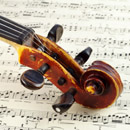
1884

Organized music groups appear at MIT
The first organized music groups, which appeared in 1884, have evolved over time into MIT's Music program, which contains a conservatory level track, and is a major part of the MIT experience and education. The first MIT Tech Orchestra appeared on campus in the 1890s, along with the Banjo and Glee Clubs. The orchestra disbanded and re-appeared several times over the years that followed until 1947, when Klaus Liepmann, MIT's first full-time professor of music and founder of the Music program, became director of the Symphony, as well as the Choral Society and Glee Club. (Photograph: MIT Banjo Club, circa 1893, Courtesy of the MIT Museum)
1927
First MIT theater production is Eugene O'Neill play
Dramashop’s first production “The Hairy Ape” by Eugene O’Neill launched the co-curricular student theater group that is open to all members of the MIT community.
1930s
Elevating the Humanities and Social Sciences at MIT
During the administration of President Karl Taylor Compton (1930-1949) work was done to improve the status of humanities and social sciences at MIT. On 9 March 1932 the MIT Corporation adopted a new plan of administration, creating three schools (Engineering, Science, and Architecture) and two divisions including the Division of Humanities. The Division of Humanities differed from the schools in that it offered no programs leading to degrees. Aside from academic instruction in the fields of English, history, economics, and language, the division was also "responsible for instruction in such fields as sociology, labor relations, government, international relations, law, philosophy, psychology, literature, music, and fine arts for both undergraduate and graduate students."
The Department of Economics and Statistics, the Department of English and History, and the Department of Modern Languages were brought into the Division of Humanities in 1932. The division also had supervisory responsibilities for some extracurricular activities, such as drama, music, and museum exhibits. The administrative head of the division, originally to be called the director, but actually called the dean, reported to the vice president and the president.
Until the first dean, Edwin S. Burdell, was appointed in 1937, the duties of the director were divided among the deans of the three schools. Dean Robert Granville Caldwell was appointed in 1938.
1940s
Four-year Program in the Humanities Created
In 1944, a four-year program of required courses in the humanities and social sciences for undergraduates was adopted by the faculty. The Committee on Educational Survey, also known as the Lewis Committee, whose report was published in 1949, called for the establishment of a School of Humanities which could grant degrees.

1950s
School of Humanities and Social Studies Formed
The School of Humanities and Social Studies was established in December 1950 with John Ely Burchard as the first dean. The Center for International Studies was founded and placed within the School in 1950 as an extra-departmental organization.
The psychology and political science sections were established in the Department of Economics and Social Science in 1951 and 1956 respectively. In 1954, a Department of Humanities was created within the school. The new department incorporated the Department of English and History and other areas of related academic interest.
In 1955, Course XXI was begun so that students could major in humanities or social sciences in combination with science or engineering. The students received the degree of bachelor of science without specification of a science or engineering department. A graduate program in political science was introduced in 1958, and in 1959 the name of the school was changed to School of Humanities and Social Science (SHSS).
In 1952, Elspeth Rostow, assistant professor of economic and social science, becomes the first woman to hold a professorial rank at MIT. After her time at MIT, Rostow served for many years at the University of Texas, where she served as dean of both the LBJ School of Public Affairs and UT’s Division of General and Comparative Studies. As dean, she recruited professors such as Barbara Jordan. About teaching Rostow said, "I enjoy the simple act of teaching. It's not transmitting information, it's enticing people into the world of ideas."
1960s
New Sections and Departments Created
The early 1960s saw the establishment of history (1960), philosophy (1961), music (1961), and literature (1962) sections within the Department of Humanities. Graduate programs in psychology (1960), linguistics (1961), and philosophy (1963) were developed in addition to the well-established graduate program in economics.
Dean Robert Lyle Bishop was appointed in 1964. The same year, the psychology section became a department. In 1965 the Department of Economics and Social Science (Course XIV) was terminated, and economics and political science achieved separate departmental status. Economics remained Course XIV while political science became Course XVII. Also in 1965 the Department of Modern Languages and Linguistics superseded the Department of Modern Languages, and was in turn superseded in 1969 by the Department of Foreign Languages and Linguistics. In 1967 the undergraduate major in humanities was added. By 1968 the SHSS consisted of five departments (Humanities, Economics, Political Science, Modern Languages and Linguistics, and Psychology) and one research center (the Center for International Studies).
1970s
Revisions to the Core Curriculum
In 1971 the Commission on MIT Education began reevaluation of both the general structure and the specific content of the General Institute Requirements in the humanities and social sciences. In October 1971, Dean Bishop appointed a subcommittee of the School Council to examine various plans for revision of the core curriculum in humanities and social science.
Dean Harold John Hanham was appointed in 1973. During his tenure the SHSS stated its mission as comprising three elements: to provide highly developed graduate programs in economics, linguistics, philosophy, political science, and psychology; to enable students to satisfy MIT's humanities requirement (viewed by the SHSS as a general education requirement); and to maintain undergraduate subject majors in economics, philosophy, political science, humanities, and science and engineering. In 1973 the Technology Studies Program was developed to relate the humanities more directly to science and engineering.
In 1974 the freshman and sophomore core program was abolished, and a new form of the Institute requirement was approved, now titled the Institute Requirement in the Humanities, Arts, and Social Sciences (HASS), designed to specify the distribution and concentration of subjects taken in the humanities. Under the HASS requirement students had to take at least three subjects in three separate fields from a list of humanistically oriented distribution subjects, at least three of which would be taken in a given field in order to achieve some degree of depth in that field. The requirement was administered by a faculty committee composed of members from all schools at the Institute (previously the humanities requirements had been administered solely by humanities faculty). The new Institute Requirement, which came into full operation in academic year 1975-1976, led to a greater range of choice for freshmen and sophomores.
In 1975 the Department of Foreign Languages and Linguistics was discontinued as a separate course (Course XXIII), and the subjects of foreign languages and literatures and linguistics became part of the humanities department. In 1976 the Department of Philosophy was combined with linguistics to form the Department of Linguistics and Philosophy (Course XXIV). A new undergraduate program called Language and Mind was established within Course XXIV. That same year, cross-registration and cross-teaching between the SHSS and Wellesley College language faculty began. In 1977, the Technology Studies Program joined forces with the newly founded Program in Science, Technology, and Society.

1980s
A Broad and Cohesive Exposure
Ann Fetter Friedlaender was appointed dean in 1984. During her tenure, the Women's Studies Program was founded (1984), the Department of Psychology formally left the SHSS (1985) to become a part of Brain and Cognitive Sciences, and the Statistics Center moved to the SHSS from the School of Science (1986).
In 1985-1986 an Institute-wide committee chaired by Professor Pauline Maier (history) recommended a new HASS-D (distribution) requirement and the restructuring of the current Hum-D requirement. The new HASS-D requirement, approved by the MIT faculty in 1987 and implemented over three years beginning in 1988-1989, was developed to ensure that students receive a broad and cohesive exposure to the humanities, arts, and social sciences. These goals were to be accomplished by imposing more structure on the distribution component of the HASS requirement and substantially reducing the number of subjects offered.
1990s
Growth in the Arts at the Institute
Philip Shukry Khoury became acting dean as of 1 July 1990 and was appointed dean in 1991, in which capacity he continued until 1 July 2006, when he became Associate Provost for the Arts at MIT.
In 2000, the School celebrated its 50-year anniversary. See here for some highlights.
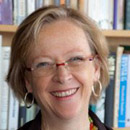
Deborah K. Fitzgerald
Interim Dean, 2006-2007
Kenan Sahin Dean, 2007-2015
2000s
Advancing International Education, MIT CAST, Curriculum, and Communications
On 1 July 2000, the name of the school changed — from the School of Humanities and Social Sciences to the School of Humanities, Arts, and Social Sciences — to recognize more fully the breadth and contributions of the arts at the Institute.
Deborah K. Fitzgerald, associate dean of the school, became interim Dean as of 1 July 2006, and was named the Kenan Sahin Dean in January 2007. Under Fitzgerald's leadership, MIT SHASS became an increasingly important contributor to the Institute's overall capacity for innovation in teaching and research. Fitzgerald strengthened the core undergraduate education requirements in the humanities, arts, and social sciences; catalyzed the restructuring of several academic units; helpled launch the MIT Center for Arts, Science, and Technology (MIT CAST); and supported the growth of MISTI (MIT International Science and Technology Initiatives). Invented and organized by MIT-SHASS faculty, MISTI is the Institute’s international education program, which prepares students to collaborate and lead around the globe.
To share ideas and raise the profile of MIT research and achievements in the humanities, arts, and social sciences, Fitzgerald also established the School's first professional communications program, leading to a feature-rich website; a monthly online digest, Said and Done; the Listening Room for MIT Music; a permanent MIT SHASS exhibition in Building 14N; an active editorial program publishing news and feature stories, profiles, and interviews; social media channels; an annual TOUR de SHASS event introducing students to MIT's humanistic fields; and many other communication works and projects.
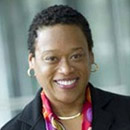
Melissa Nobles
Kenan Sahin Dean, 2015-August 2021
2010s
Making a Better World
On July 1, 2015, Melissa Nobles, Professor of Political Science, and former Head, Department of Political Science, took office as the Kenan Sahin Dean.
Upon her appointment President Reif said, “To tackle our global challenges — from water and food scarcity and climate change to digital learning, innovation, and human health — we need ambitious new answers from science and engineering. But because these challenges are rooted in culture, economics, and politics, meaningful solutions must reflect the wisdom of these domains, too. Dean Nobles offers us a vision of the humanities, arts, and social sciences as the human stage on which solutions have purpose and meaning. We are fortunate that she brings to the deanship such an expansive worldview.”
2020s
Making a Better World
2021 — Melissa Nobles continued to serve as the Kenan Sahin Dean through August 18, 2021, when she became the Chancellor of MIT. Story at MIT News
In a letter to the School Community Nobles described the advances in the School during her six year tenure.
2021
Agustín Rayo, Professor of Philosophy, begins serving as the Interim Dean of MIT SHASS on August 18, 2021, and is appointed Dean in January 2022.
Based on a history prepared by the Institute Archives, MIT Libraries
December 1995; updated September 2000, August 2006, January 2007, July 2015, September 2017, August 2021